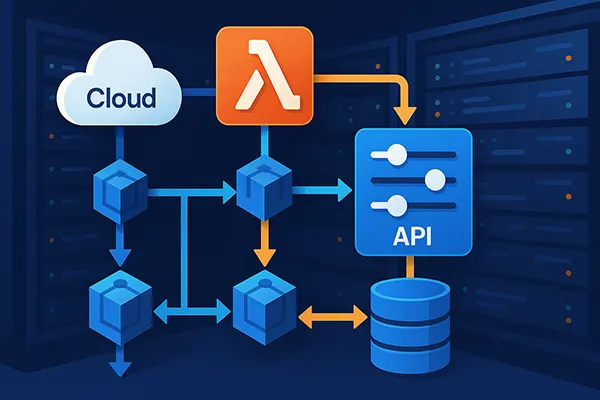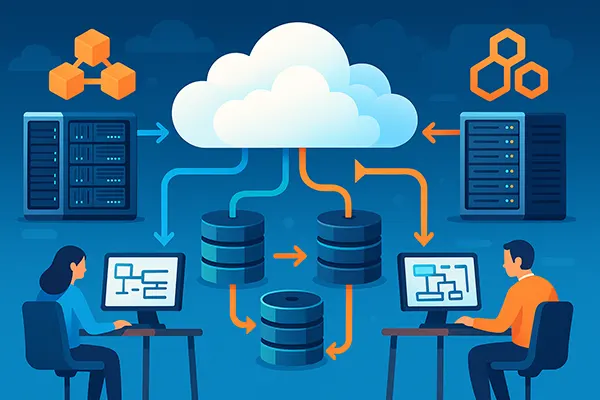How to Programmatically Build a Serverless Microservices Ecosystem in 2025

Creating a flexible and efficient microservices ecosystem in 2025 requires a clear understanding of modern serverless capabilities, development workflows, security standards and cloud-native automation. The approach below reflects practices used by engineering teams that rely on serverless designs to scale safely, maintain resilience and reduce operational overhead without relying on unmanaged infrastructure.
Design Principles for a Serverless Microservices Architecture
Engineering teams in 2025 typically begin with a service decomposition strategy based on business domains rather than technical layers. This approach helps teams maintain boundaries between services and avoid cross-coupling, allowing each component to evolve independently. Cloud providers now offer more advanced event routing, making domain-driven boundaries easier to implement.
Serverless ecosystems today rely on event-first communication flows. Instead of synchronous request chains, developers use event buses such as AWS EventBridge, Google Eventarc or Azure Event Grid. These systems reduce bottlenecks and improve fault tolerance because functions process events independently, without blocking other services.
Configuration management also plays a central role. Developers commonly use infrastructure-as-code frameworks such as AWS CDK, Pulumi or Terraform to define Lambda functions, managed APIs, queues and state machines. With IaC, teams ensure reproducible environments and better governance across development, staging and production.
Building a Consistent Foundation for Microservices
To maintain consistency, developers use shared libraries for logging, metrics and tracing. In 2025, OpenTelemetry remains the standard for distributed traces, offering unified visibility across services executed by serverless functions, containers or managed workflows. Observability unifies debugging and performance monitoring across the entire system.
Authentication flows are typically centralised using modern identity providers. Amazon Cognito, Auth0, Azure AD B2C and Google Identity offer mature tooling for low-friction sign-in processes and token validation. Each microservice validates tokens independently, reducing the need for direct communication with identity systems.
Developers also rely heavily on automated policies. Cloud providers now include built-in rules for encryption, secret rotation and network boundaries. These automated controls significantly reduce manual configuration errors and strengthen the reliability of production systems.
Implementing Microservices with Serverless Functions
Serverless functions remain the core execution units of microservices ecosystems in 2025. AWS Lambda, Google Cloud Functions and Azure Functions provide high performance, lower cold starts and the ability to run longer, more resource-intensive operations compared to earlier years. Many teams combine serverless functions with container-based serverless runtimes such as AWS Fargate or Cloud Run.
API gateways act as controlled entry points for external communication. Using routing rules, throttling policies and request validation, API Gateway services enforce predictable behaviour across endpoints. This ensures stability when user demand spikes unexpectedly.
State management is achieved using managed databases and workflow engines. DynamoDB, Firestore, Azure Cosmos DB and cloud-native relational services support transactions, flexible schemas and automated scaling. For complex workflows, developers often rely on Step Functions, Cloud Workflows or Durable Functions to orchestrate operations.
Efficient Patterns for Serverless Microservices
Event-driven function chaining is now a common approach. Instead of writing monolithic handlers, developers split logic into dedicated functions triggered by queues or event buses. This improves parallel processing, reduces latency and creates predictable scaling patterns under heavy workloads.
The saga pattern continues to gain popularity for distributed operations. By coordinating local transactions across services and compensating when errors occur, developers ensure data consistency without relying on tightly coupled transactions. Workflow engines help implement saga flows transparently.
Cost optimisation is also achieved programmatically. Teams monitor function duration, memory allocation and concurrency settings, adjusting them through IaC pipelines. Modern tooling can automatically recommend optimal settings, reducing operating costs without reducing performance.

Security, CI/CD and Operational Practices in 2025
Security practices in 2025 rely on automated policy enforcement. Cloud providers supply predefined rule sets that validate IAM policies, API exposure and data storage configurations. Developers integrate these scans into CI/CD pipelines to detect risk early.
Continuous integration pipelines use ephemeral build environments to minimise supply-chain risks. GitHub Actions, GitLab CI and AWS CodeBuild support signed artefacts and tamper-resistant storage, which is now considered a minimum standard for enterprise development.
Operational processes benefit from automated scaling and advanced monitoring. With real-time analytics provided by CloudWatch, Stackdriver or Azure Monitor, engineers can detect anomalies early. AI-driven predictive monitoring also helps forecast spikes and adjust capacity policies ahead of demand.
Long-Term Maintenance and Governance
To ensure long-term stability, teams define governance standards describing naming patterns, versioning policies and permission boundaries. This approach prevents configuration drift when services grow in number and complexity. Automated compliance tools validate adherence to these standards.
Regular load tests confirm whether scaling behaviours remain predictable as the ecosystem evolves. Teams simulate various traffic scenarios to verify that event routing, database capacity and function concurrency operate as expected. These tests are now part of regular release cycles.
Documentation remains essential. Engineers maintain architectural decision records to explain why certain technologies were selected. This helps new developers quickly understand the logic behind each pattern and maintain the system responsibly.
Popular topics
-
 Edge AI and TinyML: How Int...
Edge AI and TinyML: How Int...Edge-level artificial intelligence has become one of the most …
-
 How to Programmatically Bui...
How to Programmatically Bui...Creating a flexible and efficient microservices ecosystem in 2025 …
-
 The Role of Artificial Inte...
The Role of Artificial Inte...Artificial intelligence has become a practical component of gambling …
-
 Virtual and real hosting, w...
Virtual and real hosting, w...Today, many providers offer virtual servers where you can …
-
 Post-Quantum Cryptography i...
Post-Quantum Cryptography i...As the era of quantum computing approaches, traditional cryptographic …
